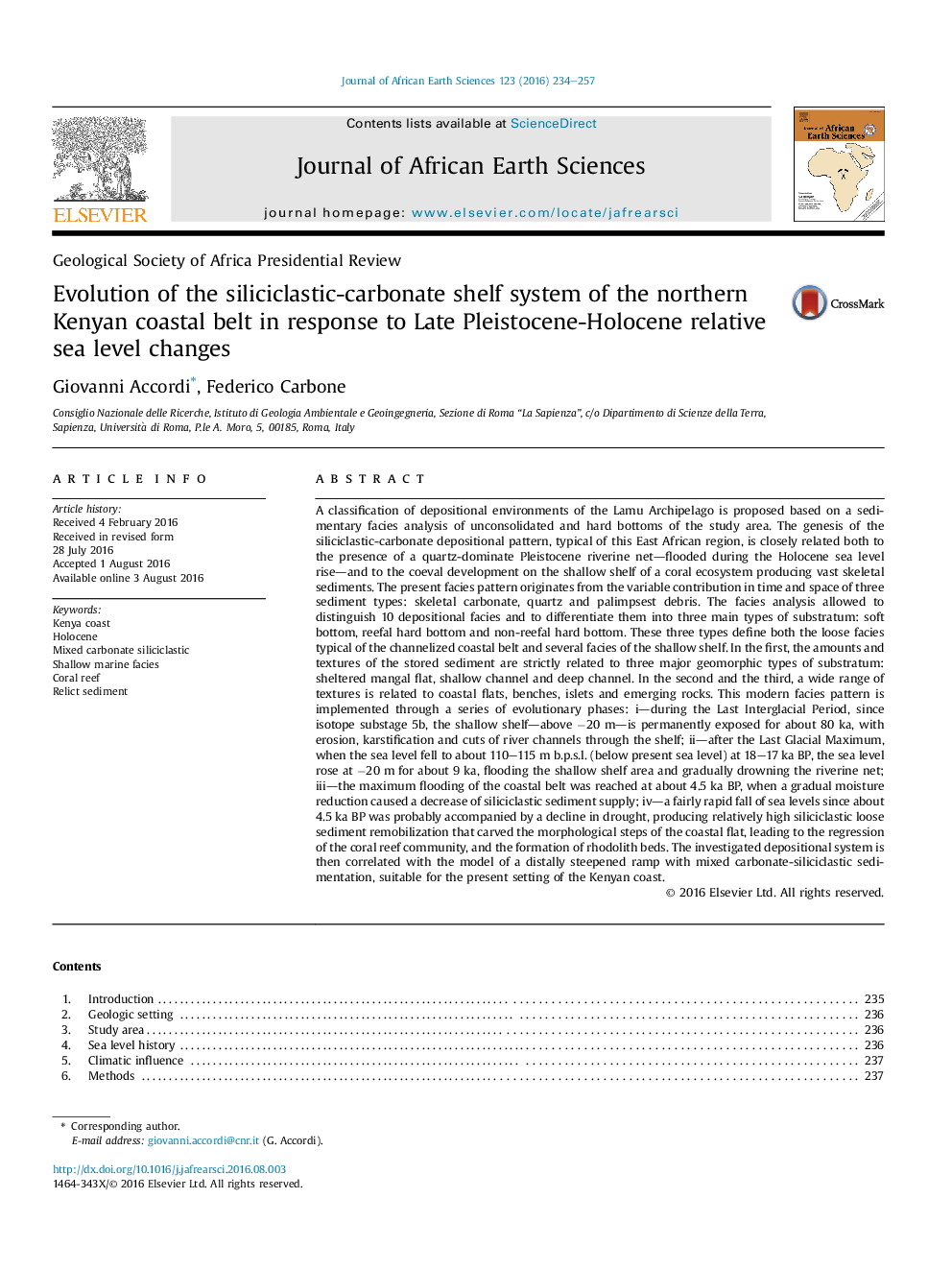| کد مقاله | کد نشریه | سال انتشار | مقاله انگلیسی | نسخه تمام متن |
|---|---|---|---|---|
| 4728181 | 1640185 | 2016 | 24 صفحه PDF | دانلود رایگان |
• Relationships between bottom morphology and biota distribution.
• Facies analysis of loose sediments.
• Hierarchical classification of depositional environments.
• Last post-glacial evolutionary phases.
A classification of depositional environments of the Lamu Archipelago is proposed based on a sedimentary facies analysis of unconsolidated and hard bottoms of the study area. The genesis of the siliciclastic-carbonate depositional pattern, typical of this East African region, is closely related both to the presence of a quartz-dominate Pleistocene riverine net—flooded during the Holocene sea level rise—and to the coeval development on the shallow shelf of a coral ecosystem producing vast skeletal sediments. The present facies pattern originates from the variable contribution in time and space of three sediment types: skeletal carbonate, quartz and palimpsest debris. The facies analysis allowed to distinguish 10 depositional facies and to differentiate them into three main types of substratum: soft bottom, reefal hard bottom and non-reefal hard bottom. These three types define both the loose facies typical of the channelized coastal belt and several facies of the shallow shelf. In the first, the amounts and textures of the stored sediment are strictly related to three major geomorphic types of substratum: sheltered mangal flat, shallow channel and deep channel. In the second and the third, a wide range of textures is related to coastal flats, benches, islets and emerging rocks. This modern facies pattern is implemented through a series of evolutionary phases: i—during the Last Interglacial Period, since isotope substage 5b, the shallow shelf—above −20 m—is permanently exposed for about 80 ka, with erosion, karstification and cuts of river channels through the shelf; ii—after the Last Glacial Maximum, when the sea level fell to about 110–115 m b.p.s.l. (below present sea level) at 18–17 ka BP, the sea level rose at −20 m for about 9 ka, flooding the shallow shelf area and gradually drowning the riverine net; iii—the maximum flooding of the coastal belt was reached at about 4.5 ka BP, when a gradual moisture reduction caused a decrease of siliciclastic sediment supply; iv—a fairly rapid fall of sea levels since about 4.5 ka BP was probably accompanied by a decline in drought, producing relatively high siliciclastic loose sediment remobilization that carved the morphological steps of the coastal flat, leading to the regression of the coral reef community, and the formation of rhodolith beds. The investigated depositional system is then correlated with the model of a distally steepened ramp with mixed carbonate-siliciclastic sedimentation, suitable for the present setting of the Kenyan coast.
Journal: Journal of African Earth Sciences - Volume 123, November 2016, Pages 234–257
